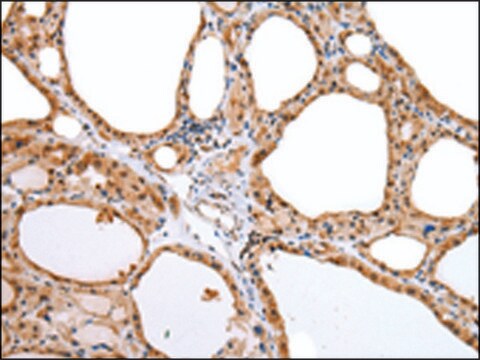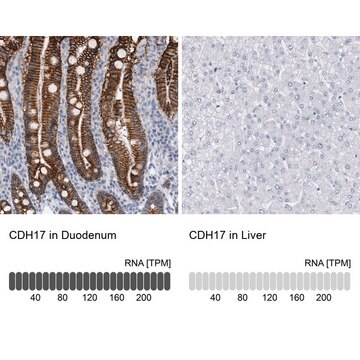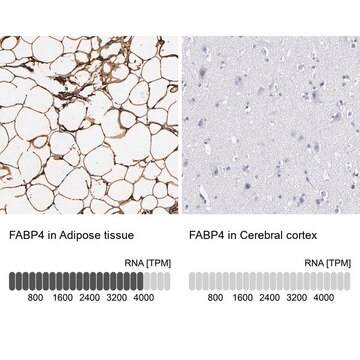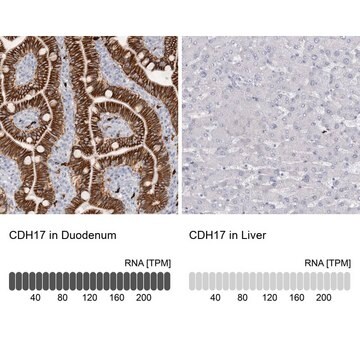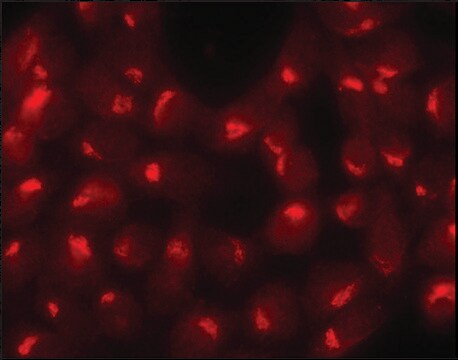ABS1677
Anti-V-ATPase subunit d 2
from rabbit
Sinonimo/i:
V-type proton ATPase subunit d 2, Osteoclast-specific vacuolar ATP synthase, V-ATPase subunit d 2, Vacuolar proton pump subunit d 2
About This Item
Prodotti consigliati
Origine biologica
rabbit
Livello qualitativo
Forma dell’anticorpo
unpurified
Tipo di anticorpo
primary antibodies
Clone
polyclonal
Reattività contro le specie
mouse
Reattività contro le specie (prevista in base all’omologia)
nonhuman primates (based on 100% sequence homology), rat (based on 100% sequence homology), human (based on 100% sequence homology)
tecniche
western blot: suitable
N° accesso NCBI
N° accesso UniProt
Condizioni di spedizione
ambient
modifica post-traduzionali bersaglio
unmodified
Informazioni sul gene
mouse ... Atp6V0D2(242341)
Categorie correlate
Descrizione generale
Specificità
Immunogeno
Applicazioni
Signaling
Western Blotting Analysis: A representative lot detected less V-ATPase subunit d 2 expression in osteoclasts differentiated in culture from GSK3 -S9A Tg mouse bone marrow monocyte precursors (BMMs) due to a downregulated NFATc1 expression caused by osteoclast-specific GSK3 -S9A mutant expression (Jang, H.D., et a1. (2011). J. Biol. Chem. 286(45):39043-39050).
Western Blotting Analysis: A representative lot detected V-ATPase subunit d 2 in osteoclasts, but not bone marrow monocyte precursors (BMMs), from wild-type mice, nor in osteoclasts from Atp6v0d2-knock mice (Lee, S.H., et al. (2006). Nat. Med. 12(12):1403-1409).
Qualità
Western Blotting Analysis: A 1:2,000 dilution of this antibody detected V-ATPase subunit d 2 in mouse osteoclast lysate.
Descrizione del bersaglio
Stato fisico
Stoccaggio e stabilità
Handling Recommendations: Upon receipt and prior to removing the cap, centrifuge the vial and gently mix the solution. Aliquot into microcentrifuge tubes and store at -20°C. Avoid repeated freeze/thaw cycles, which may damage IgG and affect product performance.
Altre note
Esclusione di responsabilità
Non trovi il prodotto giusto?
Prova il nostro Motore di ricerca dei prodotti.
Codice della classe di stoccaggio
12 - Non Combustible Liquids
Classe di pericolosità dell'acqua (WGK)
WGK 1
Punto d’infiammabilità (°F)
Not applicable
Punto d’infiammabilità (°C)
Not applicable
Certificati d'analisi (COA)
Cerca il Certificati d'analisi (COA) digitando il numero di lotto/batch corrispondente. I numeri di lotto o di batch sono stampati sull'etichetta dei prodotti dopo la parola ‘Lotto’ o ‘Batch’.
Possiedi già questo prodotto?
I documenti relativi ai prodotti acquistati recentemente sono disponibili nell’Archivio dei documenti.
Il team dei nostri ricercatori vanta grande esperienza in tutte le aree della ricerca quali Life Science, scienza dei materiali, sintesi chimica, cromatografia, discipline analitiche, ecc..
Contatta l'Assistenza Tecnica.